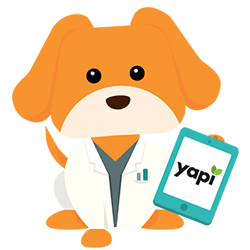
Losing a patient is costly for dental practices. The average practice loses between 15 to 20% of its patients every year, yet acquiring new patients can cost $150 to $300 per person. That means a dental office with 1,000 patients could spend at least $60,000 trying to make up for attrition.
So how much should a dental practice spend on marketing to retain patients and meet growth goals? Most practices subscribe to the “you’ve got to spend money to make money” mindset and spend between 4 and 7% of their annual revenues on marketing. In some cases, they might be investing in expensive marketing agencies, purchasing templatized marketing programs to help them attract patients, or paying for Google ads. While these tactics can be helpful, they aren’t necessary.
In fact, we argue that successful dental marketing doesn’t have to cost anything if you know how to get creative and use the resources at your disposal. Dental practices that have automation software, for instance, can regularly send out targeted marketing communications to patients. Even your dental team members and patients can be sources of free marketing.
To show you what a low-cost marketing plan looks like, we created a dental marketing version of “Do this, not that!” Better still, these approaches can work for both new and established practices.
Build Awareness Through e-Blasts and e-Newsletters
Monthly e-newsletters and e-blasts are great ways to regularly check in with patients and provide valuable, timely information. Although these forms of communication seem similar, there are slight differences. An e-blast focuses on one topic, such as a new service offering, and goes out to many people at once. In contrast, an e-newsletter can discuss different issues such as updated hours of operation, tips on oral health, and introduce new team members. E-newsletters are also more targeted; for example, you might send an e-newsletter with information about tooth whitening to patients who expressed an interest in this treatment.
Here are some best practices to make your communications effective:
- Make it easy to read, and try not to be too wordy. If you have a lot of text, break it up into shorter paragraphs.
- Keep your tone friendly and try to incorporate light humor into the writing.
- Grab your patients’ attention with catchy headlines. People are inundated with hundreds of emails a day, so you’ll need to stand out from the crowd.
- Think seasonal. Are kids going to be on summer break soon? Is Halloween approaching? Let the upcoming seasons and holidays inform your messaging, such as, “Binged on candy? Why not schedule a cleaning!”
Did you know? While your practice can absolutely create custom e-blasts and e-newsletters, YAPI offers a library of hundreds of pre-made templates, so your team doesn’t have to invest extra time and energy. Check out our content library and download the template that you like best to your PMS, make any edits, and schedule a send.
By creating and sharing relevant content with your patients year-round, you can keep them engaged, promote your practice, and ensure you’re top of mind when they need to make their next dental appointment.
Leverage Authentic Employee- and Patient-sourced Content
Social media is more effective when employees generate content. Research from Hootsuite bears this out, showing that employee advocacy builds customers’ trust. So take advantage of the fact that people are on their phones all day! Encourage your team to take pictures of your office and share them on your practice’s social media account. And if your employees are comfortable with it, they can share content on their own profiles and tag your dental practice.
Note: while stylized social media images look great, people respond best to content that feels authentic and relatable. That doesn’t mean you need to post raw, unedited photos of your employees or office in bad lighting; instead, share pictures of your reception area decorated for the holidays or happy patients sitting chairside (with their permission, of course!).
Having patients share their experiences with your practice makes it easier for potential patients to put themselves in their shoes. As such, patient interviews or testimonials make great content; patients could share before and after photos on Facebook and Instagram. Of course, if you want to share patient testimonials or photos—be sure to get consent, perhaps with one of YAPI’s paperless consent forms.
Pro tip: You can also use social media for recruiting by sharing organized group photos of your team out at lunch or getting drinks after a long workday.
You can also encourage team members to write blogs for your practice. While you can hire a marketing agency to write content, it will never feel as authentic as employee contributions. Consider creating a schedule to rotate through who is responsible for writing a post. Topic ideas include:
- Showing patients the kind of technology your office uses.
- Promoting seasonal giveaways or contests.
- Sharing top tips to get kids to brush their teeth.

Support Word-of-Mouth Marketing with Online Reviews
Online visibility is critical to standing out in a competitive dental market, which is why online review platforms are such powerful marketing tools. In the words of Dr. Joshua Austin, “I always tell doctors that if you’re trying to build your reputation, Google My Business and Yelp! are the best ways to go. They are the word-of-mouth referrals of the 21st century.”
So instead of asking, “How much should a dental practice spend on marketing?” we think the right question is, “How can I improve my online review game?” First, ensure that whatever online review platform you’re pushing patients to is completely and accurately filled out. Whether you select Yelp!, Google My Business, or Healthgrades, your profile should have an address, email, phone number, and photos so patients can get a feel for your business. Once you have your profile up and running, train your front desk team to ask for customers to leave a review at check out. An automated software system such as YAPI, for instance, allows you to send automated review requests to patients via text or email. You can include a direct link to your online review platform in the message.
We hope these tips help you rethink your marketing strategy and realize that you don’t need to invest a lot of cash to promote and grow your practice. Instead, sound systems, creativity, and automation are crucial to marketing success!




